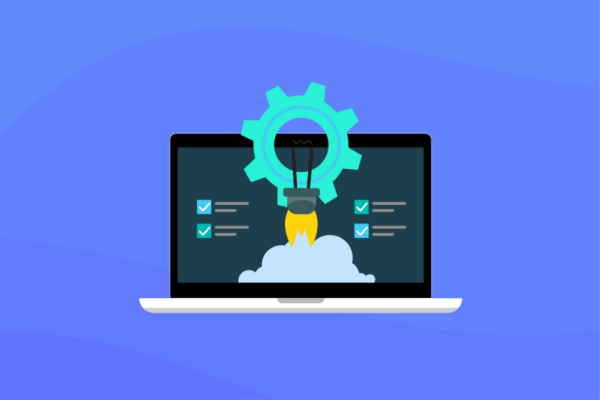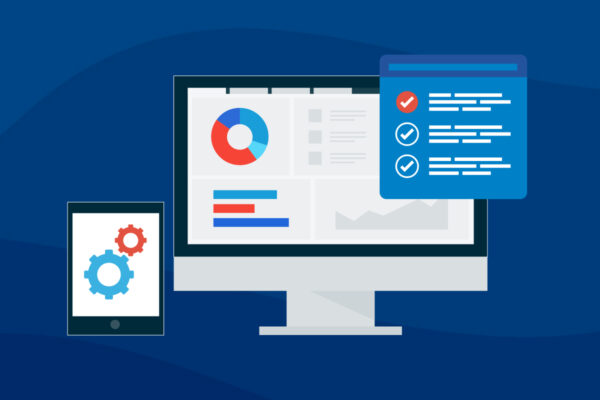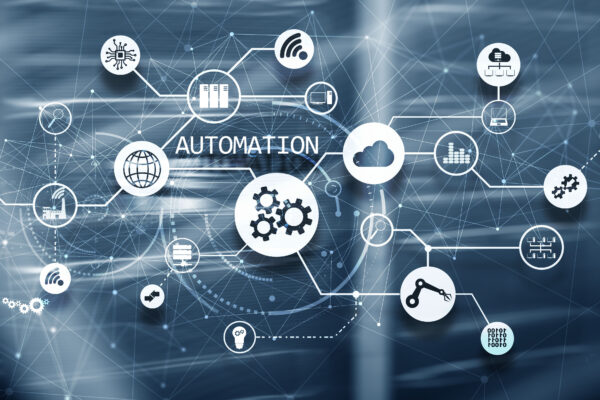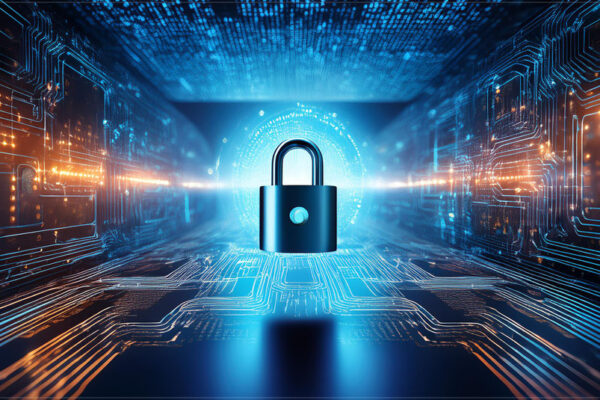Navigating Cybersecurity: Essential Eight for Small to Medium Businesses
The Essential Eight is a set of key cybersecurity strategies developed by the Australian Cyber Security Centre (ACSC) to help businesses defend against the rising threat of cyberattacks. The Essential Eight contains eight strategies that focus on addressing the most exploited vulnerabilities, providing a strong framework for reducing risks.
This blog breaks down the Essential Eight into individual components and explains how businesses can leverage Datto solutions to build a robust and resilient IT strategy.
What is the Essential Eight?
The Essential Eight, developed by ACSC, is a critical cybersecurity framework designed to help businesses defend against the increasing risks of cyberattacks. The ACSC’s mission is to safeguard the country’s digital infrastructure, and the Essential Eight plays a key role in this effort. It offers businesses clear, actionable steps to reduce vulnerabilities and secure their IT environments.
The primary goal of the Essential Eight is to empower businesses of all sizes to strengthen their cybersecurity defences. By addressing key risk areas, such as ensuring regular patching and enforcing multifactor authentication, the framework minimises the likelihood of successful cyberattacks while making it easier for businesses to maintain compliance and protect their most valuable assets. For any organisation looking to secure its IT systems, the Essential Eight provides a practical, effective roadmap to stronger, more resilient cybersecurity.
Why small businesses should prioritise the Essential Eight
Cybercriminals frequently target small and midsize businesses (SMBs), knowing that their security structures are often more straightforward and more accessible to breach. In Australia, a cyberattack occurs roughly every 10 minutes, and 43% of these attacks are aimed at SMBs. The most targeted sectors include education, healthcare and government. According to the Australian Signals Directorate Cyber Threat Report, small businesses faced an average financial loss of $46,000 due to cybercrime, with medium-sized companies experiencing losses of around $97,200 as cybercrime costs increased.
The Essential Eight provides guidelines for building a cybersecurity safety nest. Clear, actionable steps are crucial in helping businesses protect themselves from devastating threats like ransomware. By implementing recommendations such as regular patching, restricting administrative privileges and ensuring daily backups, SMBs can safeguard their systems, close security gaps, and avoid the financial and operational damage that often accompanies cyberattacks.
The Essential Eight checklist for small businesses
These eight key guidelines from the ACSC are designed to help small businesses improve and simplify their IT security. Datto’s solutions make it easy to implement these strategies, ensuring compliance and protection without overwhelming IT teams.
1. Application control
To minimise the risk of cyberattacks, businesses must not allow unauthorised software to operate unchecked. Unapproved software may contain harmful code, such as malware or ransomware, which can lead to compromised data, operational disruptions and costly security breaches.
How Datto RMM supports this:
- Policy-driven controls: Automatically restrict unapproved applications from running, reducing the risk of unauthorised software compromising your network.
- Automated approval and deployment: Streamlines the process of approving and deploying software, saving time for IT teams while ensuring compliance is consistently maintained across all endpoints.
2. Application patching
Cybercriminals often exploit vulnerabilities in outdated software as easy entry points into networks. The 2017 WannaCry ransomware attack, which affected over 200,000 computers in 150 countries, highlights the dangers of unpatched systems, which can cause massive disruptions and financial losses. Keeping software up to date helps businesses reduce the risk of such attacks.
How Datto RMM delivers automated patching:
- Automated patching solutions: Keeps systems consistently up to date with the latest security patches, aligning with Essential Eight requirements. It also reduces the manual workload for small IT teams, allowing them to focus on higher-priority tasks.
- Centralised patch management: Provides a single dashboard to easily schedule, monitor and manage patch deployments across all devices, ensuring no endpoint is overlooked.
- Real-time tracking and reporting: Offers detailed visibility into patch status and compliance, helping businesses stay secure while meeting regulatory standards and avoiding potential vulnerabilities.
3. Configure Microsoft Office macro settings
Macros in Microsoft Office applications are a common entry point for malware, as cybercriminals often exploit them to execute malicious code through seemingly harmless documents. Controlling and restricting macro usage is a key step in reducing the risk of malware attacks.
How Datto RMM automates security configuration:
- Automated policies: Datto RMM enforces macro settings organisation-wide, ensuring macros are disabled or restricted to trusted sources, reducing the risk of malicious code execution.
- Scheduled checks and alerts: Datto RMM continuously monitors for deviations from macro policies and sends alerts for any non-compliance, ensuring your organisation stays protected and aligned with security best practices.
4. User application hardening
Endpoint hardening is a critical component of securing your IT environment. It involves enforcing strict security configurations across all user applications to reduce vulnerabilities and prevent unauthorised access.
How Datto RMM supports endpoint hardening:
- Automated deployment of security policies: Datto RMM automates the rollout of security configurations across all endpoints, ensuring that recommended security settings are applied consistently and without manual intervention. This helps safeguard applications against vulnerabilities.
- Continuous endpoint monitoring: Datto RMM continuously monitors all endpoints to ensure they remain in compliance with established security baselines. Any deviations or vulnerabilities are flagged in real-time, allowing IT teams to quickly address issues and maintain a strong security posture.
5. Restricting administrative privileges
Limiting administrative privileges is crucial to reducing the risk of unauthorised changes or accidental damage within your IT environment. Excessive admin access increases the likelihood of security breaches, malware infections or unintended system changes, making it essential to tightly control who has elevated privileges.
Datto RMM’s role in managing administrative privileges:
- Centralised admin management: Datto RMM provides a centralised platform where IT teams can easily assign, adjust or revoke administrative rights across all devices. This allows for swift changes to user privileges, ensuring that only authorised personnel have access to critical systems and reducing the risk of unauthorised actions.
- Automated reporting and compliance tracking: Datto RMM offers automated reporting that tracks changes to administrative privileges, ensuring businesses remain compliant with Essential Eight requirements. These reports provide full visibility into admin access, helping IT teams maintain control and meet security compliance standards without manual tracking.
6. Patch operating systems (OS)
Consistently patching operating systems is one of the most effective ways to close security gaps and prevent cybercriminals from exploiting known vulnerabilities. Unpatched operating systems present a significant risk to businesses, as they can become easy targets for malware, ransomware and other attacks.
Datto RMM’s patch automation for OS:
- Unified patch management: Datto RMM provides a unified platform that manages patching across different OS, whether Windows, macOS or Linux. This centralisation ensures that all systems, regardless of their OS, are consistently patched and kept secure.
- Automated scheduling and prioritisation: Datto RMM automates the scheduling and deployment of critical patches, prioritising those that address the most pressing vulnerabilities. This proactive approach prevents unplanned downtime by ensuring that critical updates are applied promptly without disrupting business operations. Automated patching reduces the risk of missed updates, ensuring your systems are always protected and compliant with security requirements.
7. Multifactor authentication (MFA)
MFA adds an extra layer of protection by requiring users to verify their identity through multiple methods, such as a password combined with a one-time code or biometric scan, before gaining access. This process ensures that even if a user’s password is compromised, cybercriminals would still need a second form of verification to gain entry.
Integrating MFA with Datto RMM:
- Configurable MFA enforcement: Datto RMM allows IT teams to create and implement configurable policies that enforce MFA across all access points. Whether it’s accessing a server, application or device, Datto RMM ensures that users are required to authenticate with more than just a password, significantly reducing the risk of unauthorised access.
- MFA compliance monitoring and alerts: Datto RMM continuously monitors MFA compliance levels throughout the organisation. If any access point is found to be out of compliance or if there are any deviations from the MFA policy, IT teams are automatically alerted, allowing for quick remediation.
8. Daily backups
Backups serve as the final line of defence against data loss and ransomware attacks. In the event of a cyberattack, hardware failure or accidental deletion, having recent backups ensures that businesses can restore their systems and data without significant downtime or financial loss.
Datto RMM’s automated monitoring for backup compliance:
- Seamless integration with backup solutions: Datto RMM integrates with leading backup solutions to automate daily backups, ensuring that all critical systems and data are securely backed up. This integration removes the need for manual backup processes, reducing the risk of missed or incomplete backups.
- Automated alerts and remediation options: Datto RMM continuously monitors the status of backups and provides automated alerts if a backup fails or is incomplete. If issues are detected, IT teams receive immediate notifications along with remediation options to quickly resolve the problem, ensuring systems are protected and recovery is always possible.
Ransomware response: Automated remediation and endpoint isolation
Ransomware attacks are among the most damaging cyberthreats, where malicious software locks or encrypts a company’s data until a ransom is paid. The average cost of a single ransomware attack is $1.85 million. Without a rapid and effective response, ransomware can spread quickly across an organisation’s network, crippling operations and causing financial losses.
How Datto RMM automates ransomware response:
Datto RMM provides a proactive, automated approach to detect, contain and recover from ransomware attacks, minimising damage and ensuring rapid recovery.
- Automated ransomware activity monitoring: Datto RMM continuously monitors for signs of ransomware activity across all endpoints. With real-time detection, the solution identifies suspicious behaviours, such as unusual file encryption or excessive network activity, which could indicate the start of a ransomware attack. This proactive monitoring allows IT teams to react quickly, often before the ransomware can fully deploy.
- Automatic endpoint isolation: When Datto RMM detects potential ransomware activity, it automatically isolates the compromised endpoint from the rest of the network to prevent the spread of malicious software while IT teams address the problem.
- Integration with recovery solutions: After an incident is contained, Datto RMM integrates with recovery solutions to restore affected systems to a pre-incident state. Whether through backups or specialised recovery tools, Datto ensures that businesses can quickly resume operations with minimal downtime and data loss. This seamless integration with recovery solutions helps organisations recover swiftly without having to pay ransoms or suffer extended downtime, ensuring compliance with Essential Eight’s focus on incident response and recovery.
How Datto RMM solves Essential Eight compliance challenges
Datto RMM simplifies the process of meeting the Essential Eight requirements by offering powerful automation, centralised management and proactive monitoring tools, all designed to help businesses, especially SMBs, overcome their compliance challenges.
Streamlined automation: Achieving compliance with less effort
One of the biggest challenges businesses face in staying compliant with the Essential Eight is the manual effort required to implement and monitor security measures. Datto RMM simplifies this with automation, handling critical tasks like patching, application control and system hardening. By automating these processes, Datto RMM reduces the workload for IT teams, allowing them to maintain compliance with less manual intervention. Key features like automated patch management ensure systems are always up to date, while continuous monitoring of endpoint security helps detect and address vulnerabilities before they become risks.
Centralised management for small businesses
For small businesses with limited IT resources, managing the complexities of cybersecurity compliance can be daunting. Datto RMM addresses this challenge by providing a centralised management platform that consolidates all essential security and compliance functions into one easy-to-use interface. From monitoring software updates to enforcing administrative privilege restrictions, Datto RMM allows small businesses to manage their entire IT environment from a single dashboard. This not only makes compliance more manageable but also ensures that even with a small IT team, businesses can stay on top of security requirements efficiently.
Proactive monitoring and reporting
Staying compliant requires continuous oversight and the ability to identify gaps before they become risks. Datto RMM offers robust monitoring and reporting features that give businesses a clear view of their compliance status in real-time. IT teams can generate detailed reports on patching status, user privileges and security configuration, providing insights into areas that need attention. These reports help businesses ensure ongoing compliance with Essential Eight by highlighting issues that can be addressed proactively before they escalate into vulnerabilities. Additionally, automated alerts ensure that IT teams are immediately informed of any compliance deviations, allowing for quick remediation and continuous protection.
Conclusion: Take the next step toward Essential Eight compliance with Datto RMM
Achieving compliance with the Essential Eight framework is crucial for small businesses looking to secure their IT environments. By implementing these strategies, businesses can strengthen their security, minimise vulnerabilities and stay ahead of potential attacks. However, manually managing these processes can be overwhelming, especially for small IT teams.
Datto RMM offers a solution. With its policy-driven automation, Datto RMM simplifies the entire compliance process, handling tasks like patch management, application control, system hardening and monitoring — freeing up IT resources while ensuring businesses remain compliant. Paired with Datto’s suite of solutions, you can confidently secure your IT infrastructure with ease.
Book a demo to see how Datto RMM and its powerful suite of solutions can transform your approach to Essential Eight compliance and fortify your business’s defences.




